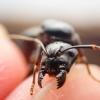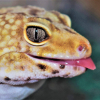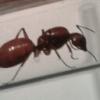I live in Wisconsin and caught 3 Queens that I believe to be Lasius Neoniger back in July. All had their first nanitics eclose around August 8th, and they ended up with about 10 workers each. I fed them some cricket and honey just inside their test tubes, which they readily accepted, and later placed each tube in a small bin. For a while, I placed little sleds of food into the mouths of their test tubes, and while they ate that, I didn't want to continue the practice, as I was concerned that lifting the tube would be stressful for them. Since then, I have been placing a variety of foods, such as crickets, peanut butter, eggs, and honey into the small outworld for them to eat. Though I have not seen any exploring their outworld, occasionally a piece of cricket will have been dragged back into one of the tubes.
At various intervals, I have checked the tubes (which are covered with paper normally) to see how they were doing and found no eggs in development in any of the three tubes. I cannot say whether the first 10 workers were all their nanitics or not, but they all appeared within a week of each other for each colony, and after the workers appeared I have not seen any other eggs.
Is is cause for concern that it has been over a month since their first workers and the queens are not laying eggs? Is there something that I should be doing differently to provide them what they need to continue growing as a colony?
If there is any information that would be helpful to provide, let me know, and I can gladly assist.

















